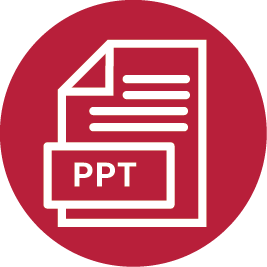
The India Copper Report: Navigating Through the Demand and Supply Gap
DOWNLOADS
Executive Summary
Copper lies at the heart of the energy transition as a critical component for transforming the Indian economy, from the power grid and electric vehicles (EVs) to construction and advanced manufacturing. Moreover, as India focuses on simultaneously achieving accelerated economic growth and a green transition, the growth in demand for copper is bound to intensify.
Various international agencies have projected significant growth in global copper demand under different scenarios. Global refined copper demand is projected to reach around 33 million tonnes in 2035 and 37 million tonnes by 2050 under the stated policy scenario (International Energy Agency, 2025). S&P Global forecasts it to rise substantially, reaching 53 million tonnes by 2050. Similarly, the International Copper Association (ICAI) anticipates that copper demand will reach about 50 million tonnes by 2050. Given that current global refined copper production stands at approximately 26.5 million tonnes annually, the demand–supply gap is expected to become acute unless there is a considerable increase in production capacity or technological advancements.
As discussed in this report, in India, projections indicate copper demand will increase significantly, reaching 3.24 million tonnes by Fiscal Year (FY) 2030 within the conventional sectors, with construction, industrial, and electricity primarily dominating copper usage. Additionally, the energy transition sector, although currently smaller, is expected to experience rapid growth, with demand projected to reach 274 thousand tonnes by FY 2030.
This report provides a comprehensive examination of the copper sector in India, highlighting its current status, strategic importance, and emerging vulnerabilities throughout the supply chain. By mapping India’s copper ecosystem against global trends, it identifies critical gaps and delivers actionable recommendations to secure a resilient, future-ready copper value chain.
This report aims to:
- Provide a global overview of the copper sector, mining, and processing.
- Estimate India’s copper demand in the energy transition and conventional sectors until FY 2030.
- Evaluate India’s domestic production constraints, global supply chain risks, and the impact of policies on copper mining, processing, and downstream industries.
- Assess India’s import dependency at different segments of the value chain by analysing trade patterns of ore and concentrates, cathodes, and semi-finished and finished goods.
- Assess the potential of copper recycling for circularity and examine the concomitant opportunities and challenges in providing a supplementary source of secondary raw material in India.
- Propose strategic recommendations to key Indian stakeholders to ensure a resilient and sustainable copper supply chain.
Methodology
The report adopts a qualitative research methodology supplemented by extant quantitative analysis from the Centre for Social and Economic Progress (CSEP) of copper demand projections. We have adopted the following sequence of steps:
- An extensive review of literature, government reports, acts and legislation, industry reports, case studies, and other policy documents pertinent to Indian and global copper supply chains and industries.
- Research consultations with subject matter experts, stakeholder interactions, internal presentations, and meetings and discussions with scholars at CSEP.
- Focused group discussions, closed-door meetings, and interviews with government officials, industry and academic experts, and fellow researchers in other think tanks and research organisations.
Key Findings and Analysis
Global Copper Scenario: Supply Chain Risks
The global copper landscape is highly concentrated, with a few geographies dominating its extraction and China owning over 44% of global processing capacity. The copper supply chain is vulnerable to geopolitical turmoil, resource nationalism, regulatory and governance challenges, and sustainability concerns. By 2050, global refined copper demand is projected to reach 50 million tonnes, driven by energy transition and industrialisation needs.
- Resource Depletion and Limited Exploration: While reserves are depleting and ore grades are declining, increased exploration investment in recent years has not yielded significant discoveries. Of the total copper discoveries, very few have progressed towards actual mine development. Not much focus has been given to greenfield areas to unlock the intrinsic, uncharted potential.
- Export Restrictions: Export restrictions on critical raw materials, including copper, are increasing as countries leverage natural resources to benefit their national economies. For example, Indonesia’s planned ban on copper concentrate exports poses a risk to global supply stability.
- High Processing Costs and Plummeting TC/RCs: Copper processing requires high upfront Capital Expenditure(CAPEX) and Operational Expenditure(OPEX), with declining ore grades further driving up costs. Globally, treatment and refining charges (TC/RCs) are plummeting drastically due to the huge expansion of smelting capacity on the demand side, combined with supply crunches of ore and concentrates. This situation erodes smelters’ margins. Escalating costs with diminishing profit margins deter investor interest.
- Geopolitical and Environmental Risks: Geopolitical risks refer to uncertainty due to politically unstable sourcing regions and unprecedented export restrictions. Declining ore grades render mining more energy and water-intensive, increasing operational and logistics costs. Latin American mines face water scarcity issues and operational disruptions pertaining to social unrest over environmental concerns, while Africa’s mining sector grapples with governance challenges.
India’s Copper Scenario: Demand–Supply Gaps
India’s net-zero commitment by 2070, clean energy transition, infrastructure expansion, and rising private consumption will drive up the demand for copper. Despite significant reserves, India remains a net importer of copper due to low exploration success, outdated technologies, exhausted mines, the inefficacy of auctions to attract new mining and exploration blocks, insufficient investment, and limited private sector participation. At the current production rate, known copper reserves can be sustained for only approximately 45 years, necessitating the need for alternative supply sources and leveraging recycling potential. The closure of a major copper smelter in Tuticorin has reduced cathode output by 40%, exacerbating import dependence. Sourcing of copper from secondary sources is also limited due to low recycling capacity and nascent infrastructure. The rising import of copper-embedded finished products indicates domestic midstream processing constraints and undermines the scope for domestic value addition.
Challenges in the Indian Copper Value Chain
- Upstream: Under the current mining policy regime, India’s geological potential remains underexplored, coupled with a complicated auction regime and delayed statutory clearances, thus leading to a lack of new investments. The sole domestic copper miner, Hindustan Copper Limited (HCL), faces operational inefficiencies, leading to stagnant ore and concentrate production.
- Midstream: Raw material scarcity, technological inefficiencies, and plummeting TC/RCs reduce the competitiveness of the midstream sector. The closure of Sterlite’s Tuticorin smelter due to environmental non-compliance left Hindalco as the only primary supplier of refined copper. However, this situation has started to improve with the commencement of operations at Adani’s Kutch Copper Limited’s 0.5 million-tonne processing plant. Another new plant with a similar capacity will also be commissioned by 2029.
- Downstream: Increased reliance on imported copper products undermines domestic processing. Domestically produced cathodes are insufficient for downstream processing. Trade agreements and liberal import policies facilitate duty-free imports. At the same time, the easy import of finished products, many of which are subsidised in their exporting nations, has undermined the price competitiveness of India’s midstream and downstream copper sectors.
- Recycling: India’s secondary copper infrastructure remains underdeveloped, informal, and unregulated, raising safety and purity concerns. The domestic scrap market needs to be formalised, given the immense copper recovery potential from scrap and e-waste.
- Trade: India became a net importer of copper cathodes in FY 2019, while imports of copper ore and concentrates declined due to reduced processing demand. To secure raw materials, India is diversifying its supply sources, though Indonesia’s ban on copper concentrates poses a risk. Historically, a net importer of copper products such as wires, rods, pipes, and tubes, India has recently achieved a surplus in rod exports, indicating the growth of its domestic manufacturing sector and improving export competitiveness.
Policy Recommendations
Upstream: Enhancing Exploration and Mining
India is import-reliant for more than 50% of its copper needs. Given the rising copper demand across the world and India’s growing copper needs, India must explore and extract more copper, as large resources and reserves lie unexplored and hence not mined. Policy reforms are urgently needed to attract investment in exploration and mining activities to ensure a favourable return on investment. Given copper’s strategic significance to India’s economy, the mineral concession procedure—from auctioning to granting statutory clearances and commencing mining operations needs to be streamlined to avoid any unnecessary delays and backlogs.
Midstream: Strengthening Processing Capabilities
To stabilise eroding margins, smelters should consider diversifying revenue streams by capitalising on high-value by-products such as sulphuric acid, gold, and silver, as well as using more intermediate products, including blister copper, anodes, and scrap (Fastmarkets, 2025). Strategic collaborations, including joint ventures, contract manufacturing, and long-term commercial agreements among miners, processors, and downstream industries, are important to drive technological innovation, risk-sharing, and economies of scale. The existing environmental regulatory frameworks need to be strengthened. Domestic companies should be encouraged to achieve globally recognised certifications like the “Copper Mark” to reinforce credibility and transparent third party verification in responsible sourcing, processing, and recycling.
Downstream: Bolstering Domestic Manufacturing
The large-scale entry of Kutch Copper is expected to make domestic cathodes available and costcompetitive for downstream manufacturers, reversing India’s status as a net importer. There is a need to undertake a comprehensive review of existing trade agreements and duty structures, particularly the agreements with the Association of Southeast Asian Nations (ASEAN), Japan, South Korea, and the United Arab Emirates (UAE). Strategic vertical integration is required to streamline operations across the copper value chain, consolidating fragmented market segments for improved efficiency. Quality Control Orders (QCOs) should be reassessed to avert any supply crunches of cathodes to the downstream industries without compromising on quality.
Recycling and Circular Economy Measures
Regulatory oversight is needed to structure and formalise the scattered and unorganised sector engaged with collection, sorting, and reprocessing through adherence to environmental and safety standards. It is important to develop a robust domestic secondary copper market by facilitating direct linkages between scrap vendors, recyclers, and copper processors. Industries should be encouraged to use more recycled materials, guided by the overarching principles of the circular economy. Extended Producer Responsibility (EPR) rules need to be strengthened and made effective to ensure proper end-of-life management and resource recovery.
Leveraging Foreign Policy Instruments: Across the Value Chain
India should proactively engage with key copper-reserve-rich and copper-producing countries such as Chile, Peru, the Democratic Republic of Congo (DRC), Australia, and Zambia through resource diplomacy, strategic acquisitions, and effective partnerships. Apart from KABIL-led G2G initiatives, more Business-to-Business (B2B) and Government-to-Business (G2B) collaborations are essential in the areas of exploration, technology and knowledge exchange, value-added processing, and recycling. Existing bilateral relationships should be leveraged more effectively, along with multilateral forums such as the Mineral Security Partnership, Indo-Pacific Economic Framework, Supply Chain Resilience Initiative, and Quad–ASEAN, to deepen economic cooperation. Trade, investment, and offtake agreements should be used strategically as alternative finance mechanisms to secure a sustainable copper supply chain.
Concluding Remarks
India’s growing copper demand calls for a holistic and comprehensive strategy that integrates the domestic copper value chain with international partnerships, technological advancements, and sustainable practices. Strengthening upstream and midstream capacities while fostering a robust downstream manufacturing sector will be crucial in bridging the demand–supply gap and prioritising domestic value addition. By adopting strategic policy interventions and aligning with international best practices, India can enhance its copper self-sufficiency and secure a resilient supply chain for future industrial growth and energy transition.
Q&A with authors
What is the core message conveyed in the paper?
Copper, as a cross-cutting critical mineral, is indispensable to electrical and electronics, industrial, energy transition, and various other sectors across the economy. As India focuses on achieving accelerated economic growth alongside its climate commitments, the demand for copper is bound to increase at a rapid rate. However, both globally and within India, an acute demand-supply gap persists. The copper report provides a comprehensive overview of India’s copper sector, highlighting its strategic importance, current status and emerging vulnerabilities throughout the supply chain. By mapping India’s copper ecosystem in the context of the global landscape, the report identifies critical gaps. It provides actionable policy recommendations to secure a robust, resilient, and future-ready copper value chain.
What presents the biggest opportunity?
As India strives to become a developed economy by 2047 and fulfil its energy transition goals, the country is set to witness significant economic growth. Copper, a cross-cutting critical mineral essential for both traditional industries and the energy transition, will add a major fillip to this expansion. Unlike many other critical minerals, India has domestic copper reserves, resources, and processing capacity. Historically, copper’s widespread usage and consistently high prices have made it attractive for investment. Notably, in India, around 8.28 million tonnes of copper ore resources with high-grade content (≥1.85%) remain largely untapped, requiring advanced exploration technologies. To secure a robust copper supply chain and meet rising demand, India must prioritise R&D, technological advancements in processing and recycling, greenfield exploration, strategic resource diplomacy, and expansion by new industry entrants, both domestically and globally.
What is the biggest challenge?
The copper report identifies challenges in India’s copper sector, such as the existing mining policy not being conducive to exploration and extraction, specifically to greenfield exploration, high processing costs alongside social and environmental externalities, a fragmented downstream sector, cheaper imports of value-added copper products in which India lacks competitiveness, and underdeveloped recycling infrastructure. Globally, the copper mining and processing scenario is concentrated in a few geographies, with China dominating the processing landscape. As discussed in the report, there are other risks to supply stability, such as geopolitical turmoil, export restrictions, resource nationalism, declining copper ore grade, trade barriers, and plummeting treatment and refining charges eroding processors’ margins.
Find on this page

The Centre for Social and Economic Progress (CSEP) is an independent, public policy think tank with a mandate to conduct research and analysis on critical issues facing India and the world and help shape policies that advance sustainable growth and development.








